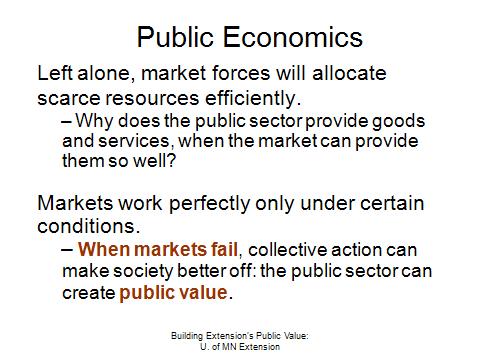Those of you working within Cooperative Extension have likely heard about Minnesota Extension’s major reorganization and shift to a regional/county program delivery model. I frequently field questions about the shift: Why did Minnesota make the change? How did it happen? What has been the result? How is Minnesota Extension doing now?
I am very grateful that George Morse and a knowledgeable team of co-authors have now published a book,
The Minnesota Response: Cooperative Extension’s Money and Mission Crisis, that answers these questions and more.
On his blog, “Economics in Cooperative Extension,” George Morse explains what the book is about:
“The Minnesota Response explains how Minnesota Extension responded to its mission and money crisis in 2004 with a sweeping reorganization. Breaking with 95 years of tradition, Minnesota Extension shifted from a county based delivery model to a regional/county delivery model. Regionalization, however, is the tip of the iceberg. Several other policies define Minnesota’s new approach, including changes in funding sources, degree of specialization of the regional educators, more statewide program teams, development of business plans, increased use of market research, supervision of field educators by program specialists rather than geographic supervisors, and new scholarship and promotion expectations. The Minnesota Response details these policies and reports on their initial impacts on program quality, scholarship, access to Extension, and public support for Extension.”
The full citation to the book is: George Morse, Jeanne Markell, Philip O’Brien, Adeel Ahmed, Thomas Klein, and Larry Coyle. The Minnesota Response: Cooperative Extension’s Money and Mission Crisis. iUniverse, Bloomington, October 2009. 428 pages.
It is available from amazon.com and barnesandnoble.com in soft cover or hard cover.
Google Books allows you to read some of the book. To find the book easily, enter the full title at the Google Books link. George has also included some excerpts at his blog.
I’d be pleased to hear of your reactions to the “Minnesota Model” and to the book, and I’m sure George would be, too. Feel free to share your reactions in the comment section here (particularly as they relate to public value) or at George’s blog.





